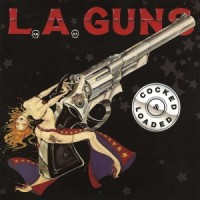

Made possible by modern techniques of manufacture, they tend to be reliable, easily maintained and have ease-of-use as a feature contributing to ease of training. Now we have the modern striker-fired pistol, a gun I consider a real innovation. If you have one to carry for defense purposes, you carry in Condition One. The most common service pistol of that time - and one of the most commonly made sidearms of the current era - is the 1911.

The draw - and re-holstering - can be safely accomplished with training.Īre you going to fumble around and unload the chamber every time you return the gun to the holster? At any old cold, rainy night in a windy parking lot - after someone tried to kill you and you had to shoot? Worse, after firing, you’ll want to get the gun out of your hands before responding police arrive. If you really need a gun, the time isn’t there to load the pistol. It’s simply ignorant to carry a self-defense pistol in this way. You have to cock the hammer on the draw, something that’s prone to be fumbled.Ĭondition Three is “half loaded.” There’s an empty chamber over a loaded magazine - so-called Israeli Carry. The thumb rides the safety while firing, but placed under the safety as the gun is replaced into the holster.Ĭondition Two is a loaded pistol with the hammer down on a loaded chamber - a risky thing, lowering the hammer on a single-action pistol. On the presentation, the gun is drawn and, as it levels toward the threat, the safety is pressed “off.” The modern striker-fired pistol, while “semi-cocked,” draws no cocked pistol comments - even though it’s closer to a single-action-analog than double-action.Īfter shooting, the safety is only applied after you “look and assess” ensuring you don’t need to shoot anymore. The safety is “on,” locking the sear and the slide.
#L.a. guns cocked and loaded full
Of course, it was Jeff Cooper, founder of the Modern Technique of the Pistol, who devised the “conditions.” Condition One, designed around the “heavy duty self-loading pistol” - the single-action semi-auto of the day, is “cocked and locked.” The chamber is loaded from a magazine and a full magazine seated into the pistol. Attempts to explain the problems inherent with such a relationship just led to the observation that semi-auto pistols were being carried that way. 357 Magnum cocked in the Jordan River Holster, the over-the-hammer strap stretched between the hammer nose and the frame. One of those worthies, a good guy who just didn’t get the deal, came into dispatch one night with his Smith & Wesson Model 13. To say it made the uninitiated, unready and incapable nervous is an understatement. Our sergeant carried a Gold Cup there was a smattering of other Government Models and a Browning P-35, all of which were carried in Condition One. That’s commonly done as one pursues upland game or in responses to emergency calls … without the cocked hammer concerns. The gun in the photo has the hammer, hidden inside the receiver - cocked. The Remington Model 870 shotgun has been in common use by police and hunters for more than 40 years. He had no ambidextrous safety lever and elected to carry that gun anyway.
#L.a. guns cocked and loaded series
People would see my Colt National Match in the Safariland high ride duty holster and nervously tell me, “Your pistol is cocked.”Īs time went on, we had one officer carrying a Colt Series 70 Government in his Don Hume Jordan River Holster, thumb-break strap, in Condition Two - hammer down on a loaded chamber with a full magazine.

45 ACP, carried in “Condition One” - chamber loaded over a full magazine, hammer cocked and thumb safety on. Jeff Cooper had already determined that a part of the Modern Technique of the Pistol was the “heavy-duty self-loading pistol” - at that time, it was the Colt Government Model (or Commander) in. I remembered back when I first became a policeman in the late 1970s. As we were close to Gunsite Academy, home of the Modern Technique of the Pistol, it was common to see various makes of 1911-pattern pistols cocked and holstered. While at a media event in Arizona late last year, I was asked about the difference in perceptions about various handguns and their conditions of readiness.


 0 kommentar(er)
0 kommentar(er)
